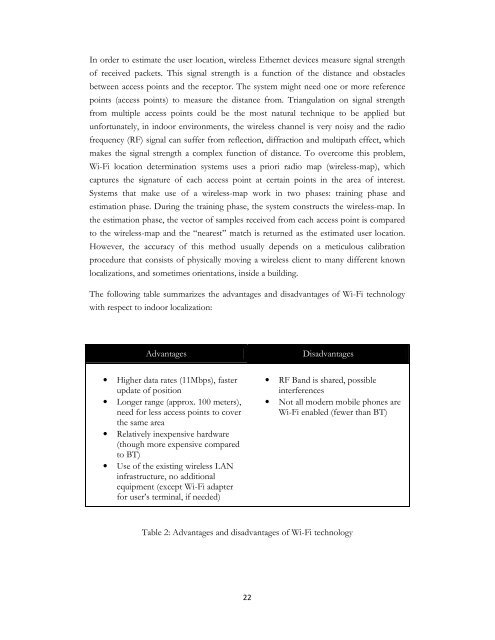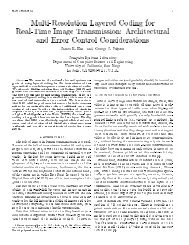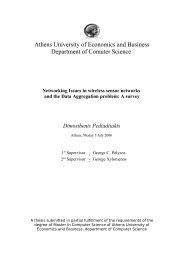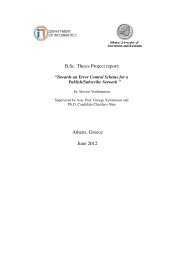The mobile phone as a platform for assisting the independent living ...
The mobile phone as a platform for assisting the independent living ...
The mobile phone as a platform for assisting the independent living ...
Create successful ePaper yourself
Turn your PDF publications into a flip-book with our unique Google optimized e-Paper software.
In order to estimate <strong>the</strong> user location, wireless E<strong>the</strong>rnet devices me<strong>as</strong>ure signal strengthof received packets. This signal strength is a function of <strong>the</strong> distance and obstaclesbetween access points and <strong>the</strong> receptor. <strong>The</strong> system might need one or more referencepoints (access points) to me<strong>as</strong>ure <strong>the</strong> distance from. Triangulation on signal strengthfrom multiple access points could be <strong>the</strong> most natural technique to be applied butun<strong>for</strong>tunately, in indoor environments, <strong>the</strong> wireless channel is very noisy and <strong>the</strong> radiofrequency (RF) signal can suffer from reflection, diffraction and multipath effect, whichmakes <strong>the</strong> signal strength a complex function of distance. To overcome this problem,Wi-Fi location determination systems uses a priori radio map (wireless-map), whichcaptures <strong>the</strong> signature of each access point at certain points in <strong>the</strong> area of interest.Systems that make use of a wireless-map work in two ph<strong>as</strong>es: training ph<strong>as</strong>e andestimation ph<strong>as</strong>e. During <strong>the</strong> training ph<strong>as</strong>e, <strong>the</strong> system constructs <strong>the</strong> wireless-map. In<strong>the</strong> estimation ph<strong>as</strong>e, <strong>the</strong> vector of samples received from each access point is comparedto <strong>the</strong> wireless-map and <strong>the</strong> “nearest” match is returned <strong>as</strong> <strong>the</strong> estimated user location.However, <strong>the</strong> accuracy of this method usually depends on a meticulous calibrationprocedure that consists of physically moving a wireless client to many different knownlocalizations, and sometimes orientations, inside a building.<strong>The</strong> following table summarizes <strong>the</strong> advantages and disadvantages of Wi-Fi technologywith respect to indoor localization:AdvantagesDisadvantages• Higher data rates (11Mbps), f<strong>as</strong>terupdate of position• Longer range (approx. 100 meters),need <strong>for</strong> less access points to cover<strong>the</strong> same area• Relatively inexpensive hardware(though more expensive comparedto BT)• Use of <strong>the</strong> existing wireless LANinfr<strong>as</strong>tructure, no additionalequipment (except Wi-Fi adapter<strong>for</strong> user’s terminal, if needed)• RF Band is shared, possibleinterferences• Not all modern <strong>mobile</strong> <strong>phone</strong>s areWi-Fi enabled (fewer than BT)Table 2: Advantages and disadvantages of Wi-Fi technology22








